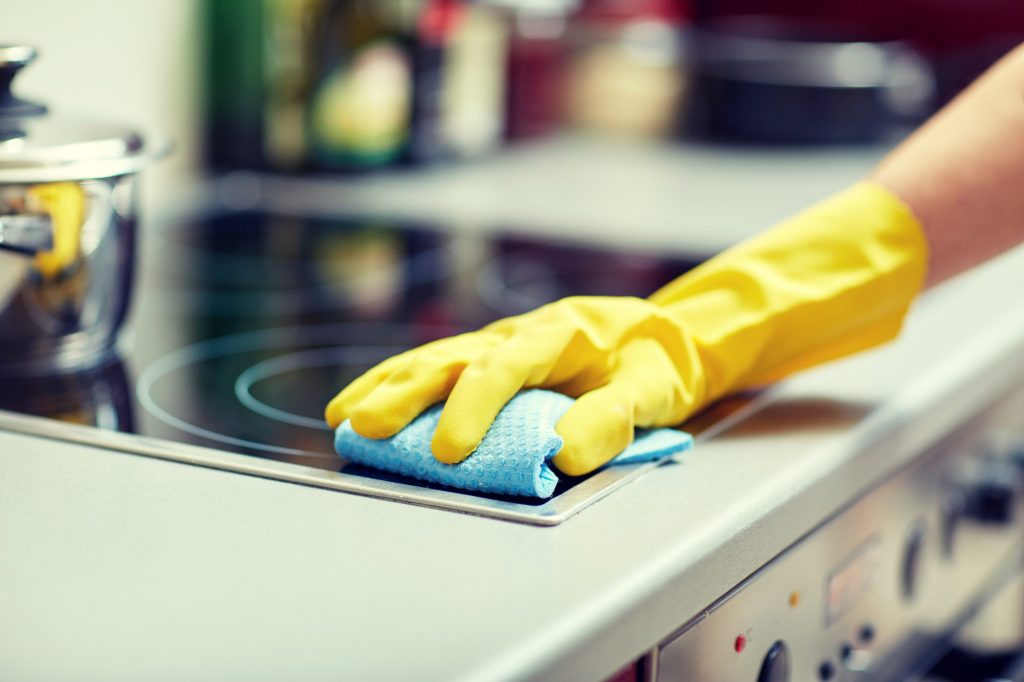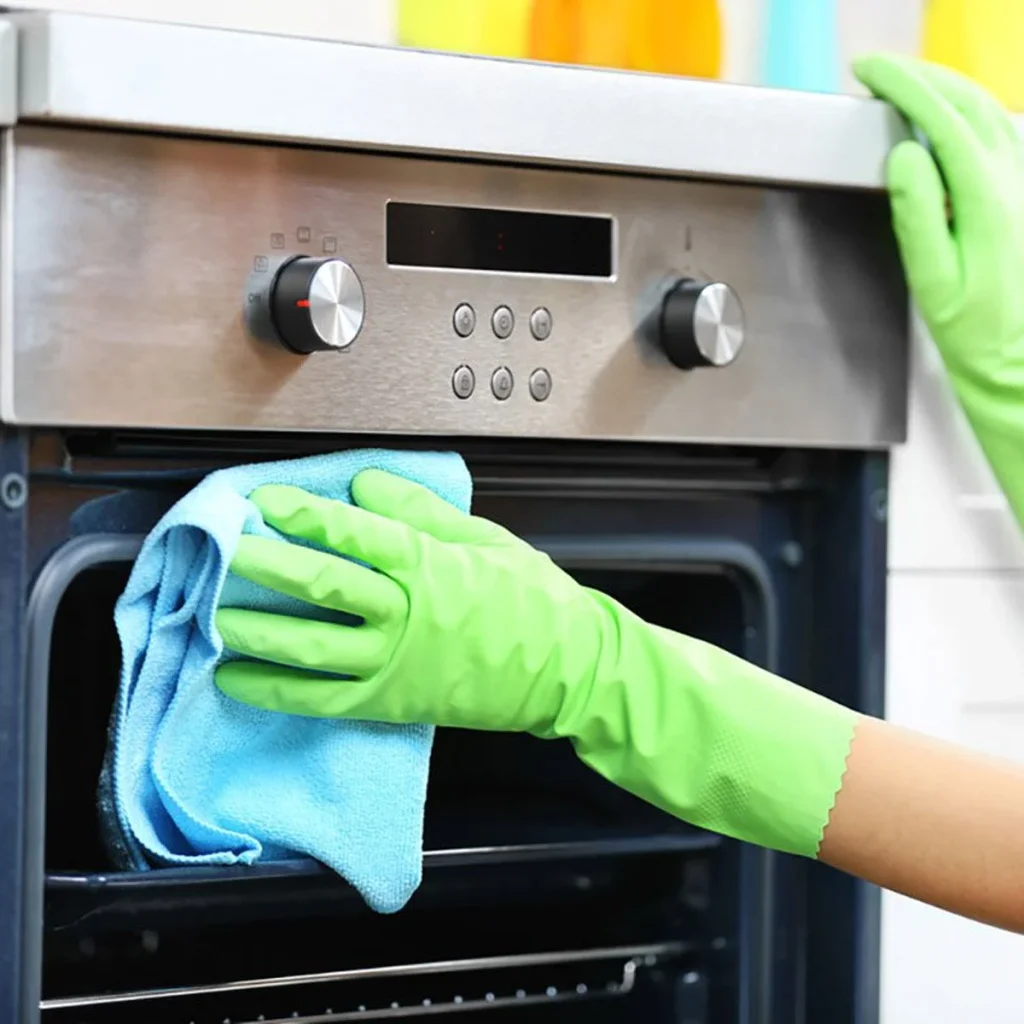Blog
How to Clean and Maintain Your Kitchen Equipment Properly
Maintaining a clean and efficient kitchen is essential for both safety and food quality. Proper cleaning and maintenance of kitchen equipment not only extend the life of your appliances but also ensure safe cooking practices and enhance the overall culinary experience. This guide provides a comprehensive approach to cleaning and maintaining various kitchen equipment, including small appliances, cookware, and utensils.
1. Understanding the Importance of Cleaning
Health and Safety
- Prevent Foodborne Illnesses: Bacteria can thrive on dirty surfaces and equipment, leading to food contamination. Regular cleaning helps prevent the spread of harmful pathogens.
- Reduce Allergens: Dust, food particles, and grease can accumulate in the kitchen, triggering allergies or respiratory issues.
Equipment Longevity
- Avoiding Wear and Tear: Regular maintenance prevents the buildup of grime and corrosion, extending the lifespan of your kitchen equipment.
- Optimal Performance: Clean appliances operate more efficiently, saving energy and improving cooking results.
2. General Cleaning Guidelines
Daily Cleaning Routine
- Wipe Down Surfaces: After each use, wipe down countertops, cutting boards, and other surfaces with a mixture of warm water and mild detergent. This helps remove food particles and bacteria.
- Clean Stovetops: Remove spills and splatters from stovetops immediately to prevent hard-to-clean stains. Use a suitable cleaner for the type of stove surface you have (ceramic, gas, etc.).
- Empty Trash Bins: Dispose of food waste daily to prevent odors and pests. Consider using compost bins for organic waste.
Weekly Cleaning Routine
- Deep Clean Appliances: Dedicate time each week to clean bigger appliances like the microwave, oven, and refrigerator. For example, clean the microwave by heating a bowl of water with lemon juice to loosen grime.
- Wash Towels and Sponges: Replace kitchen towels and sponges regularly to avoid bacteria buildup. Wash sponges in the dishwasher or microwave to disinfect them.
Monthly Cleaning Routine
- Inspect and Clean Exhaust Fans: Remove grease and dust from exhaust fans and filters to maintain air quality. This can reduce fire hazards and improve kitchen ventilation.
- Deep Clean Floors: Mop or scrub floors to remove any accumulated dirt and grease. Pay special attention to corners and under appliances where debris tends to gather.
3. Cleaning Specific Kitchen Equipment
3.1 Cookware
Non-Stick Pans
- Cleaning: Use soft sponges or cloths with mild dish soap. Avoid abrasive cleaners and metal utensils that can scratch the surface. If food is stuck, soak the pan in warm, soapy water before cleaning.
- Maintenance: Regularly season your non-stick pans with a small amount of oil to maintain their coating. Avoid cooking at high temperatures, which can damage the non-stick surface.
Stainless Steel Cookware
- Cleaning: Soak in warm, soapy water to loosen stuck-on food. Use a non-abrasive cleaner for tough stains, like baking soda mixed with water to form a paste. Scrub gently with a soft cloth.
- Maintenance: To prevent discoloration, avoid cooking acidic foods in stainless steel for long periods. Regularly polish with a stainless steel cleaner to maintain shine.
Cast Iron Cookware
- Cleaning: Rinse with hot water and scrub with a brush. Avoid soap, which can strip the seasoning. Dry immediately to prevent rust; you can heat it on the stove to ensure it’s fully dry.
- Maintenance: After cleaning, apply a thin layer of vegetable oil to maintain the seasoning. Store in a dry place to avoid moisture buildup.
3.2 Small Appliances
Blenders
- Cleaning: After use, fill the blender half full with warm water and add a drop of dish soap. Blend for 30 seconds, then rinse thoroughly. For tougher stains, soak the container.
- Maintenance: Regularly check and replace seals to prevent leaks. Clean the blades carefully to avoid injury.
Microwaves
- Cleaning: Wipe down the interior with a damp cloth. For stubborn stains, use a mixture of vinegar and water or a commercial microwave cleaner. Avoid harsh chemicals that can leave residues.
- Maintenance: Keep the microwave’s exterior clean and ensure the vent is unobstructed. Regularly check the door seal for any wear.
Coffee Makers
- Cleaning: Run a mixture of equal parts water and vinegar through the brewing cycle once a month. Follow with plain water to rinse. Clean the carafe and filter basket after each use.
- Maintenance: Keep the coffee maker in a dry area and check for mineral buildup regularly. Descale it if you notice slower brewing times.
3.3 Utensils and Cutlery

Wooden Utensils
- Cleaning: Hand wash with mild soap and water. Avoid soaking to prevent warping. Rinse thoroughly and dry immediately.
- Maintenance: Regularly apply food-safe mineral oil to keep wood hydrated and prevent cracking. Avoid using wooden utensils with high-acid foods to maintain their integrity.
Stainless Steel Utensils
- Cleaning: Wash with warm, soapy water or place them in the dishwasher. Dry immediately to prevent water spots. For stubborn stains, use a mixture of baking soda and water.
- Maintenance: Use a mixture of vinegar and water to polish and maintain shine. Store utensils in a drawer or holder to avoid scratches.
Knives
- Cleaning: Hand wash with soap and water. Avoid the dishwasher, which can dull the blades. Rinse and dry immediately to prevent rust.
- Maintenance: Regularly hone knives with a honing steel and periodically sharpen them to maintain edge quality. Store knives in a block or on a magnetic strip to protect the blades.
3.4 Refrigerators
- Cleaning: Wipe down shelves and bins with a solution of warm water and baking soda. Clean spills immediately to prevent odors. Check for expired items and dispose of them regularly.
- Maintenance: Check and replace the water filter regularly, and keep the condenser coils clean and free of dust. Organize items to ensure good airflow.
3.5 Dishwashers
- Cleaning: Remove and clean the filter monthly to prevent clogs and odors. Run an empty cycle with vinegar to clean the interior and remove any accumulated grease.
- Maintenance: Check for worn-out seals and replace them to prevent leaks. Regularly inspect the spray arms for clogs to ensure proper cleaning.
4. Specialized Cleaning Products
Choosing the Right Products
- Eco-Friendly Options: Consider using natural cleaners like vinegar, baking soda, and lemon juice, which are effective and non-toxic. They are also safe for food surfaces.
- Avoid Harsh Chemicals: Steer clear of abrasive or harsh chemicals that can damage surfaces or leave harmful residues. Always read labels for safety and usage instructions.
Homemade Cleaners
- All-Purpose Cleaner: Mix equal parts vinegar and water in a spray bottle for a versatile cleaner. This works well on most surfaces and is gentle yet effective.
- Deodorizer: Place an open box of baking soda in the refrigerator to absorb odors. For general deodorizing, sprinkle baking soda on surfaces, let sit, and wipe clean.
5. Safety Considerations
Personal Safety
- Protective Gear: Wear gloves when using strong cleaning agents, and ensure proper ventilation in the kitchen. Consider using a mask if using cleaning products with strong fumes.
- Avoid Cross-Contamination: Use separate sponges and cloths for different areas of the kitchen, especially between raw meat and other surfaces. This practice helps prevent foodborne illnesses.
Equipment Safety
- Unplug Appliances: Always unplug small appliances before cleaning to prevent accidents. For larger appliances, ensure they are turned off and cooled down.
- Follow Manufacturer Instructions: Adhere to cleaning and maintenance guidelines provided in the user manuals. This ensures you don’t void warranties and that you clean correctly.
6. Building a Cleaning Schedule

Daily, Weekly, and Monthly Tasks
Creating a cleaning schedule can help keep your kitchen organized and ensure tasks are not overlooked. Here’s a sample breakdown:
- Daily: Wipe down surfaces, clean stovetops, empty trash, and wash dishes.
- Weekly: Deep clean appliances, wash towels and sponges, and mop floors.
- Monthly: Inspect and clean exhaust fans, deep clean the refrigerator, and check for expired food.
Setting Reminders
Use calendar apps or physical planners to set reminders for cleaning tasks. This helps ensure that nothing is forgotten and keeps your kitchen in top condition.
7. Conclusion
Maintaining a clean and efficient kitchen is crucial for both safety and culinary success. By establishing a regular cleaning routine and following specific guidelines for each piece of kitchen equipment, you can ensure that your kitchen remains a safe and enjoyable space for cooking.
Investing time in the proper care of your kitchen equipment will lead to better cooking experiences, longer appliance lifespans, and a healthier environment. Embrace these cleaning and maintenance practices, and enjoy the benefits of a well-kept kitchen. A clean kitchen not only enhances your cooking but also provides a pleasant environment for family and friends to gather and share meals. Happy cooking!


